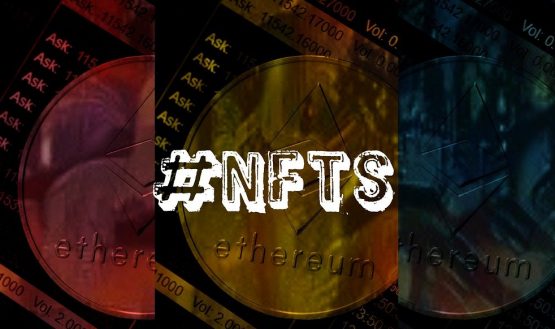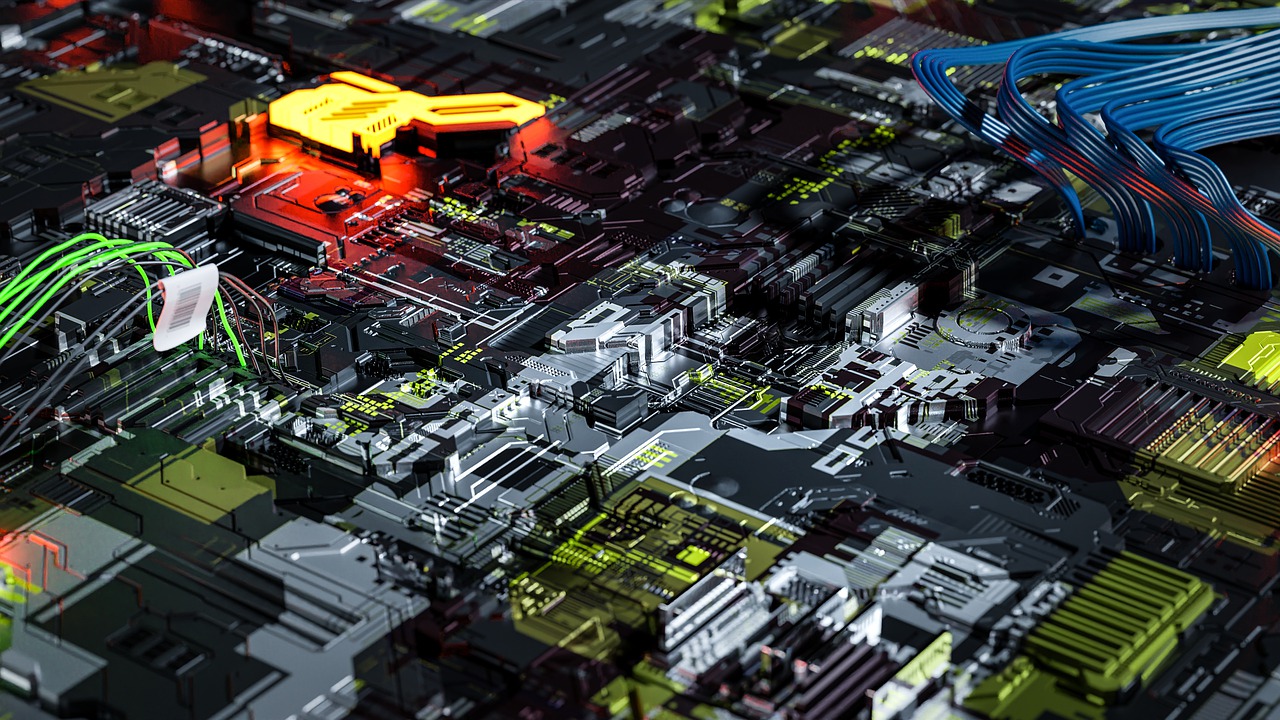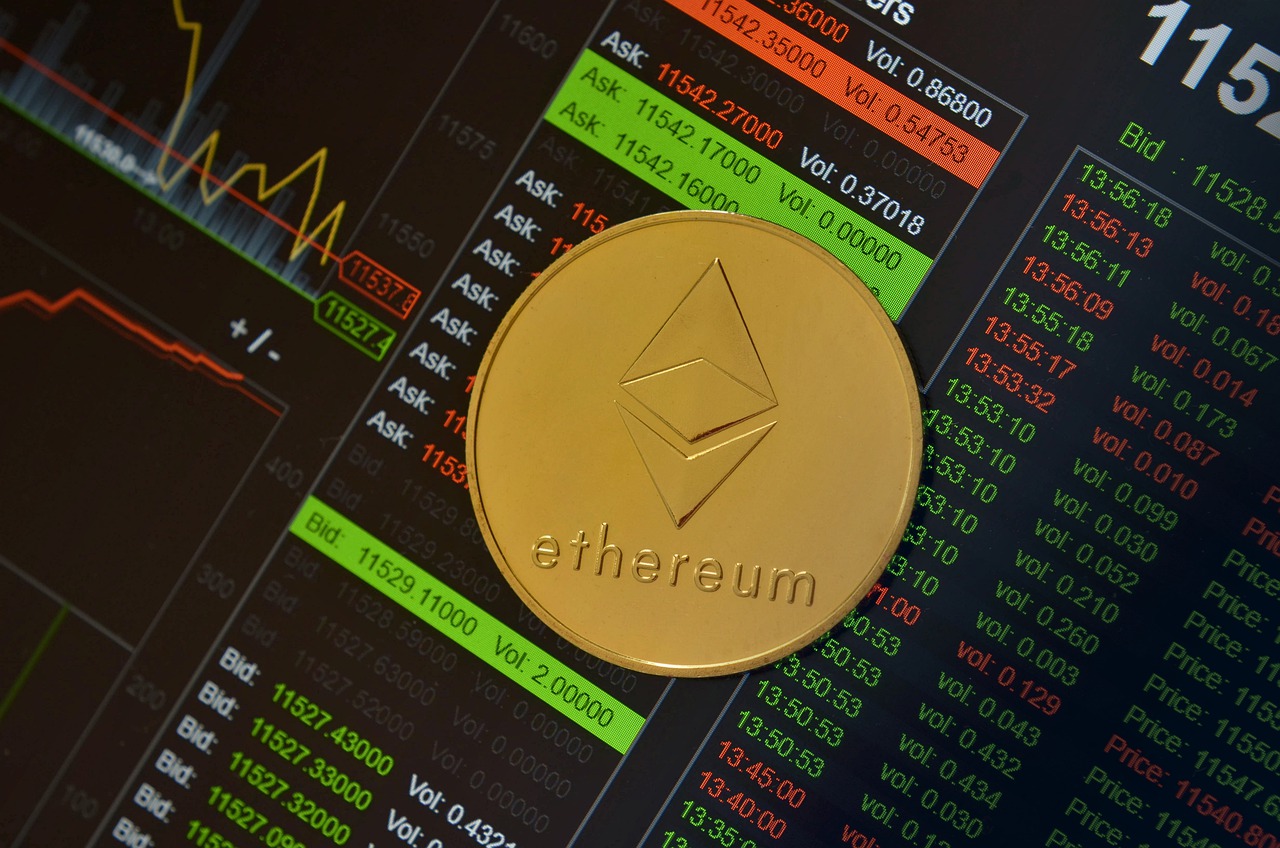‘There are two sides to every coin’. This quote has extra significance in the world of NFTs. While non-fungible tokens (NFTs) have given an altogether new definition to ‘art’, on the flipside, concerns regarding the CO2 emissions caused by the generation of cryptocurrencies to purchase and sell these digital collectibles are abound too.
Could these adverse effects be controlled or reversed? Experts are indeed positive about the outlook for crypto. In this guide we will review the impact of NFTs on the environment, compare the environmental impact of NFTs to that of other industries, and also discuss solutions to make NFTs greener for our environment.
1
Payment methods
Features
Usability
Support
Rates
Security
Selection of Coins
Classification
- Easiest to deposit
- Most regulated
- Copytrade winning investors








Don’t invest in crypto assets unless you’re prepared to lose all the money you invest.
What are NFTs?
Before starting with the analysis of NFTs’ environmental impact, we’ll review what NFTs are, when they became a thing, how they are created and sold, what can be an NFT.
A Sneak Peek at NFTs
In economics, non-fungible assets are those assets that could not be interchanged with any other thing. For instance, these assets could include a digital painting, a GIF, a tweet, or any other thing which can be distinguished.
NFTs are one-of-a-kind assets in the digital world which not only are unique and non-interchangeable data units but also could be stored on a digital ledger. These NFTs are linked with items like videos, audios, photos, etc., and collectors who buy NFTs have public proof of ownership with the use of blockchain technology.
When did NFTs get started?
The concept of NFTs owes its origin to ‘Colored Coins’ developed by the creator of Ethereum, Vitalik Buterin. These coins were developed to create digital assets with the help of the blockchain. Later on, a peer-to-peer (P2P) financial platform ‘Counterparty’ was developed to create tradable assets or currencies for users.
With the popularity of this system, John Watkinson and Matt Hall developed a collection of 10,000 unique characters called Cryptopunks on the Ethereum Blockchain, which were rapidly traded online.
These cryptopunks inspire the creation of NFTs called CryptoKitties, which was based on a game revolving around collectible and one-of-a-kind creatures (cats) that are 100% owned by the users without any fear of its replication or destruction. The popularity of NFTs was skyrocketed with the news of Jack Dorsey selling his first tweet in form of an NFT. From there, things are just getting started for NFTs.
How can NFTs be created and sold?
How to create and sell NFTs is a question that stays in every artist’s mind. Everyone wants to create money from their artistic work through the means of NFTs.
First of all, you would need to pay the platform for creating (minting) an NFT for your work. For buying Ethereum, you would be required to have a digital wallet on any authorized platform. Read our guides to Ethereum wallets and NFT wallets.
Once you have created your digital wallet and added the required cryptocurrency (Ethereum) to it, you can create your NFT from any NFT platform. Upload your work, which you would want to make into an NFT, on that platform, and choose how you would want to sell your NFT.
Given an attractive description to your file, set the minimum price, and decide what percentage of royalty you would want to claim on reselling your art. Pay the listing fees of the platform, and your item would be ready to be sold in the form of an NFT.
What can be made into NFTs?
Any form of digitally reproduced file could be stored in the form of an NFT, for instance, photos, audios, videos, GIFs, tweets, art, and even memes.
One can generate an NFT from any item which holds value and can be digitally stored.
Compare Ethereum Exchanges & Brokers
Binance
Buy EthereumAs with any asset, the values of digital currencies may fluctuate significantly....
Libertex
Buy Ethereum74% of retail investor accounts lose money when trading CFDs with this provider....
Are NFTs bad for the environment?
The soaring popularity of these tokens has invited the attention of many celebrities and traders. However in addition to this buzz, these tokens are unintentionally doing massive energy consumption, thereby increasing the overall carbon footprint made by the cryptocurrencies, especially Ethereum.
NFTs are generally based on the Ethereum blockchain, and buyers are usually required to use Ethereum to purchase any NFT. Ethereum is already known for consuming a high amount of energy in its mining as it uses an energy-intensive mining process: proof of work, therefore more NFT transactions with the use of Ethereum add up to increased carbon emissions in the environment.
On top of it, an NFT transaction involves many stages in its process: minting, bidding, selling, and transferring. It is estimated that a humongous amount of energy (332kWh) is required to mint an NFT on Ethereum.
The value of Ethereum could be driven up by NFT transactions, which incentivizes more and more miners to generate these transactions with the deployment of more machines. The usage of these machines creates the source of increased environmental pollution. Similarly, the higher price of a cryptocurrency motivates more miners to participate in the computations, which in turn, leads to more NFT electricity consumption.
As the adoption of NFT transactions is getting increased in various industries, climate experts and environmentalists are raising alarms about the unprecedented increase in temperature caused by these transactions. This temperature rise could in turn be the cause of different calamities like a rise in sea level, global warming, species extinction, and other severe events.
How are NFTs bad for the environment?
From the above discussion, it is clear that NFTs have some adverse effects on the environment because of their increased carbon emissions. In this section, let us analyze more in detail regarding how the NFTs are currently bad for the environment.
NFTs and energy consumption
According to Digiconomist, more than 192kWh of energy is consumed in a single Ethereum transaction. This quantum of energy is enough to source the power of 1 U.S. household for 6.5 days. The annualized Total Ethereum footprints are at par with the power consumption of the Philippines, i.e. 91.39 TWh.
The security mechanism known as proof of work is a very energy-intensive mining process that requires a high amount of energy for adding new blocks to Ethereum and Bitcoin blockchains.
Since NFT transactions are based on the Ethereum blockchain, NFT energy consumption is enormous. These transactions drive energy consumption in their every process, be it minting, bidding, selling, or transferring.
Ethereum is predicted to rise in its market in the next five years, therefore energy consumption in its mining would increase further as miners would be having more monetary incentive to generate Ethereum to earn more profits.
With this increased value of Ethereum in the upcoming years, NFTs transactions would require more amount of energy in NFT mining, and hence, more environmental harm would be done.
NFTs and their carbon footprint
What is a carbon footprint? The answer, a carbon footprint is an approximation of all carbon emissions made out in the production and consumption of a product. Generally, it is just an estimate rather than an actual figure because a lot of processes are involved in a single transaction which makes it difficult to arrive at an actual figure.
These estimates help determine the impact of a transaction on the environment. Though it is difficult to find out the exact value of carbon footprint generated in minting an NFT, however, there are sources which state that 91.41 kg CO2 carbon footprint is generated in a single Ethereum transaction.
This figure of 91.41 kg CO2 is at par with the “carbon footprint of 202,596 VISA transactions or 15,235 hours of watching Youtube”. The annual carbon footprint generated from Ethereum transactions is equivalent to the carbon footprint of Hong Kong, i.e. 43.41 Mt CO2.
The above figures are specifically for Ethereum transactions, the data related to the carbon emissions concerning NFTs- Ethereum transactions show that the carbon footprint of 260 MWh, 160 tonnes of CO2 is produced within six months from an artist’s multi-edition NFTs.
This is equivalent to the electricity consumption of an EU resident for 77 years, and at par with the energy consumption by flying an airplane for 1500 hours, driving a petrol car for 838000 km, boiling a kettle for 3.5 million times, laptop usage for a span of 2.5 thousand years, using a computer for 636 hours.
These comparisons and escalating figures highlight the daunting effect of NFT transactions on the environment.
NFTs and climate change
The effect of using the Ethereum blockchain has shown the increased emissions of Carbon dioxide in NFTs transactions. These emissions have both: short-term and long-term effects on the environment by causing extreme weather events. Its short-term effect includes the rise in the general temperature of the Earth. An increase in carbon emissions is causing respiratory problems to individuals and is also affecting the crops adversely.
This increase in temperature has a cascading effect on other calamities, which unfortunately has a long-term effect on the planet. These long-term effects include an increase in sea level through melting of the polar ice caps thereby causing floods, global warming, tropical storms, wildfires, species extinction, and other severe events.
Your capital is at risk
How does the environmental impact of NFTs compare to other industries?
To have more insights into NFT contribution towards emissions of global carbon dioxide, it is necessary to have a comparative analysis of NFTs’ environmental impact with other majors polluting industries, such as airlines, mining, transport.
NFTs and the Aviation Industry
The Aviation Industry is responsible for around 2% of global carbon dioxide emissions, as per the UN’s International Civil Aviation Organisation (ICAO). The amount of emissions caused by this industry is equivalent to the overall emissions of Germany. 900 million tonnes of CO2 were produced by flights around the world annually.
Though the exact figures regarding the total carbon emissions made by all NFT transactions in a single year, however, it is estimated that the carbon emissions concerning NFTs- Ethereum transactions produce a carbon footprint of 260 MWh, 160 tonnes of CO2 within six months from an artist’s multi-edition NFTs. These data show if millions of NFT transactions take place in a year, then they have the potential of crossing the total carbon emissions caused by the aviation industry.
NFTs and Mining
Data shows that the mining industry also accounts for 2 to 3 percent of global CO2 emissions. Efforts are being made to ensure the decarbonization of this industry. With the increase in NFTs transactions worldwide, the environment would face a severe impact on itself, if both of these industries do not bring about any change in their system to ensure minimum carbon emissions from their end.
NFTs and Transportation
The transportation industry is a major contributors to the greenhouse gas emissions in the environment. It’s estimated that this sector accounts for 7.3 billion metric tons of carbon dioxide (CO2) emissions yearly.
Though the pollution made by NFTs transactions is not at par with the pollution caused by this sector, however, it is a matter of concern for the environmentalists and policymakers regarding the increase in global CO2 emissions caused by these two sectors.
Will Ethereum 2.0 and staking improve the environment?
The growth of NFT transactions has led to discussions surrounding the negative environmental impact of NFT transactions. This is why efforts are being made to look out for an alternate model of consensus or mining to reduce high carbon emissions made in an NFT transaction.
Ethereum uses an energy-intensive “proof-of-work” method to host NFTs transactions on its blockchain, which consumes a hefty amount of energy. It has been announced by Ethereum that it would shift away from the proof-of-work method to the proof-of-stake (PoS) model where users would be rewarded based on how much cryptocurrency they already possess, thereby decreasing their computational efforts.
The use of the PoS model ensures that the network is managed by a limited number of powerful nodes, and transactions are validated after the required amount of stakes are received from the coin holders in a form of trust.
Both models (PoW and PoS) require the users to confirm the transactions and add the required blocks in the blockchain. PoW model requires users to solve hard problems intentionally to ensure there is no fraud. In this process, a large amount of energy is required by the users.
However, in the PoS model, problems are not as hard as the earlier model and take less energy to get solved. Since several problems which a miner could solve depend upon his blockchain investment, it reduces the adverse impact of an NFT transaction on the environment as less amount of energy is lost in the entire process.
Further, this staking model is considered to be more profitable and eco-friendly when compared with the PoW model as the PoS model would also be useful in form of passive income generation through DeFi.
Hence, this shift in model to Ethereum 2.0 would decrease the energy consumption made by Ethereum through the proof-of-stake mechanism and would cut NFT energy consumption by a whopping figure of 99%.
Your capital is at risk
What are other measures to make NFTs greener?
Apart from the change in technology from PoW to PoS model, stakeholders are also adopting various other measures to make NFTs greener:
Nifty Gateway goes Carbon Negative
The NFT marketplace, Nifty Gateway, has decided to go carbon negative with a blend of technology improvements and offset purchases. Developers are planning to run their NFT minting system on EIP-2309 to reduce fees of Ethereum gas by 99%.
Read our guide to the best NFT marketplaces.
Marketplace running on the Flow blockchain
NFT power consumption is comparatively less on the Flow blockchain. Dapper Labs, an NFT marketplace, is running on this technology, which allows it to use less computing power in its transactions. This consequently leads to lesser emissions in an NFT transaction.
Usage of Proof of Staked Authority (PoSA) network by the NFT Marketplace
Every marketplace is experimenting with new technologies to reduce the harmful environmental impact of NFTs transactions. One such instance includes the usage of the Proof of Staked Authority (PoSA) network by Binance NFT marketplace.
This network is a mixture of the Proof-of-Authority and PoS model, which makes this combination sustainable, energy-efficient, and environmental-friendly. Further, the usage of this model makes this marketplace less blockchain-use-intensive, thereby obviating the need of having multiple accounts for its users.
What are the positive ethical aspects of NFTs?
Despite their environmental impact, NFTs have made their mark in the digital world, and there are reasons for it:
Proof of Ownership
NFTs are the best way to prove your ownership of any asset in the digital space. NFTs link ownership to your account through the blockchain network. In the digital world where content gets stolen without any credit, NFTs serve as an authentic proof of ownership for the creators. NFTs also allows the users to trace the history of ownership through its mechanism, and benefit the original creator to earn royalty after every reselling. The ownership benefits protect the consumers from the dangers of counterfeiting NFTs.
Uniqueness
Since NFTs are made on the blockchain, they are connected with unique data. The unique characteristics of NFTs determine their potential of creating value for their users. Some of the NFT users are also having the option of having numerous duplicates.
Further, the uniqueness of NFTs is ensured by the immutable feature of blockchains, therefore NFTs remain unaffected from any replacement, changes, or removal. In these ways, the uniqueness of the products is promoted by NFTs in the digital space.
Transferability
Since NFTs are made on smart contracts, it makes ownership easily transferable. There are specific criteria prescribed by the smart contracts, which must be met by both: buyers and sellers to ensure transferability of ownership between them.
Conclusion
NFTs are getting immense attraction from the digital art world for their ability to provide ownership and value to the assets or creation of the artists. Though its usage is harming the environment, its stakeholders are adopting various measures to make NFTs greener.
The shift to Ethereum 2.0, usage of the Flow blockchain and Proof of Staked Authority (PoSA) network, and adoption of “carbon negative” policies among the NFT marketplace would ensure that benefits of NFTs are reaped while causing the minimum damage to the environment.
If you are planning to make the NFT of your work, then you have to make sure that you do NFTs transactions on the most ethical marketplaces that use the requisite technologies to guarantee eco-friendly NFTs transactions.
Overall, the NFT market is bound to grow in the future and we think it is the wise time to make your first investment. As NFTs are purchased with Ethereum, get your first NFT soon by buying Ethereum on FCA, CySEC & ASIC regulated cryptocurrency exchange: eToro. Make sure you take advantage of the decentralized world and its many use cases.


 Bitcoin
Bitcoin


